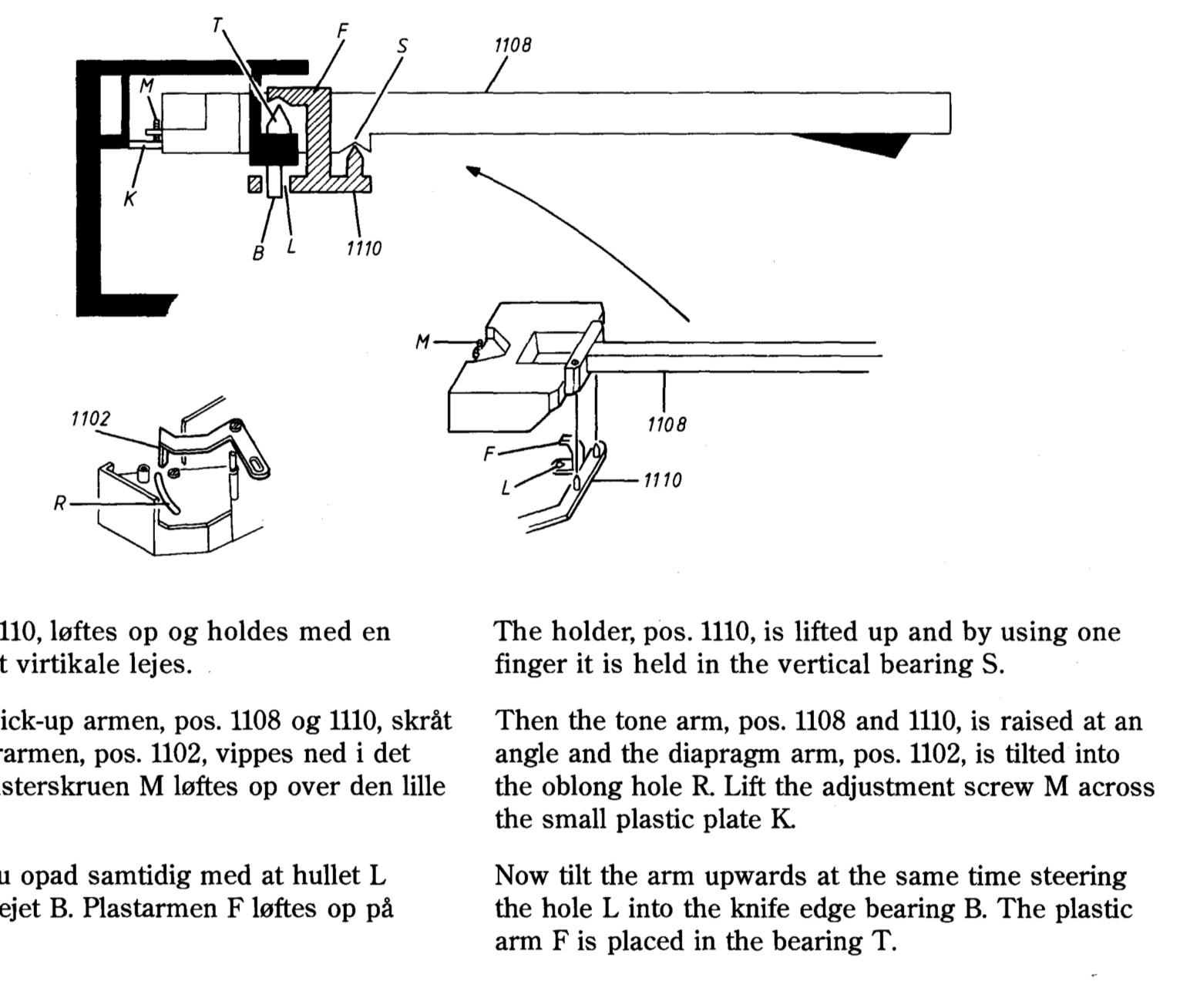Forum Replies Created
- AuthorPosts
- 15 June 2024 at 00:34 in reply to: Beogram CD 50 – How to Select Proper Setting For ‘Master Voltage Switch’? #56503
You need to use the 120v position AND need to ensure that the fuse in 500mA. If you are unsure of switch end positioning, use an ohm meter between the two AC pins and the 120v one will have about half the resistance of the 240v one.
I would not bother turning it off at the mains daily or even a few days as this stresses components that were intended to have power on continuously such as the those in the power supply. I would only do it for extended vacations of weeks to protect from power surges. Using the 4002/4 models for almost 50 years this way without an issue.
Actually the marks are a wearing away of the matte finish. Some have simply removed the finish entirely or you can check out Rudy’s excellent blog entry at https://beolover.blogspot.com/2022/04/beogram-40024004-keypad-restoration.html.
The tweeter section is on one side of the woofer section, so you ca place a stereo pair with them on the inside or outside as they are mirrored. If doubling up I would have each channel in a WTTW configuration and angled at the listener as you’d want to stay on axis.
The damping cylinder only slows lowering. Raising should be quick. You can turn it more to slow it further. It simply won’t lower if too much.
The screw in the black bottom of the damping cylinder controls the rate of descent.
I have seen the braided cable rise up out of the curved channel as approaching the spindle if it is twisted. Also the bearing height is adjustable. The brass bearing is threaded and with a large locking nut on top. However, that rarely ever is the problem.
Your picture of Part 1110, Holder, appears to be missing a rear piece S that sticks up and may have snapped off. The only solution would be to find a replacement.
I believe that bearing is part of the arm assembly and is not available separately. You will need to replace the entire are or find a parts unit. Most B&O tonearms were a single part number.
Relooking at it the second pin may be there. However, if you had an issue with the knife-edge bearing B not being there, the arm would not work at all. It’s possible the are was not properly refitted. Try following these steps precisely again:

The spring is responsible for restoring the arm to its rest position. It appears you can move it to the proper level with your finger; therefore, it appears the spring has lost tension or was switched with one of the other springs. You should be able to confirm that by pressing on the spring’s top connection. The other possibility is that the counterweight is too far forward which for the tracking weight calibration. Ensure that when the tracking force know is at 0 that the arm floats when in Play mode.
Screw B is the one that you use to align the tonearm with the sensor arm. Also spring 1107 does not appear to be attached at the top in your photo.
It may be that the mute switch needs cleaning. If you try cleaning the stylus when it is at rest and hear anything then the mute switch is not making good contact.
Doubling up speakers that were not designed to be is tricky as it can create interference effects which will result in uneven response and dispersion. If I were to attempt it I would place them so that each sides’ tweeters are in the center as close to each other as possible (pairing opposing channels). This will result in a narrower listening window but will double your dynamics.
You haven’t mentioned which country version you have, but since both components have two-pin AC plugs, I would start by testing them in the same wall outlet without a power strip and flipping one plug if possible to see it the hum lessons. When you do this ensure that no other connection goes to either component including antenna cable. It is quite possible that it is a crossed ground or phase issue when the units are plugged into different outlets. Also a cable antenna or TV connection that has a CATV connection can introduce hum. This test will let you narrow it down.
Sound quality will be more a function of the cartridge and speakers you are using versus the preamp. To get an internal one you’ll need to spend around $400 where a decent external one can be had for $100+.
I can’t comfortably comment on how sonically different they were even though I worked for a dealer while both were in production. Obviously, the 4400 was their top of the line at its time a was replaced by the 5000 series during the 7700’s time. Both had similar discrete Class AB amps. If you want to read about the design I can suggest no better resource than it Owners Manual: https://beomanuals.com/manuals/Beomaster/Beomaster%204400/Bang-Olufsen-Beomaster_4400-Owners-Manual.pdf. While you obviously don’t push your Maggies that hard, sometimes you don’t know what you are missing till you hear them with a more authoritative amp. In my case I was using Sony’s venerable TAN-5550 VFET amp which was a great match as it was conservatively rated and I beefed up its power supply.
If by first generation, you mean MG-1’s then they are 4-ohm speakers and you will find significantly better dynamics from the 4400 as it has a more powerful and capable amp section – 75w vs 30w in 7700. I never had the MG-1 but dit have the MG-2 and they definitely needed the power for good bass response.
If you have the original phono DIN cable marked with a PH then B&O used to have DIN->RCA adaptor that had an external ground wire which is needed. If you can find that then a special internally grounded one such as https://soundsheavenly.com/beogram-record-players/14-2244-beogram-to-non-bo-device-as-used-on-beogram-4000c-phono-pre-amp-receiver-amplifier-etc-bo-ref-6271348.html#/2-length-1m/60-grounding-internal_ground_link will work.
You mention a preamp but don’t mention which one and whether you are using the proper Phone DIN cable to it. This cable has double screening and is a requirement to prevent hum and buzz.
- AuthorPosts
